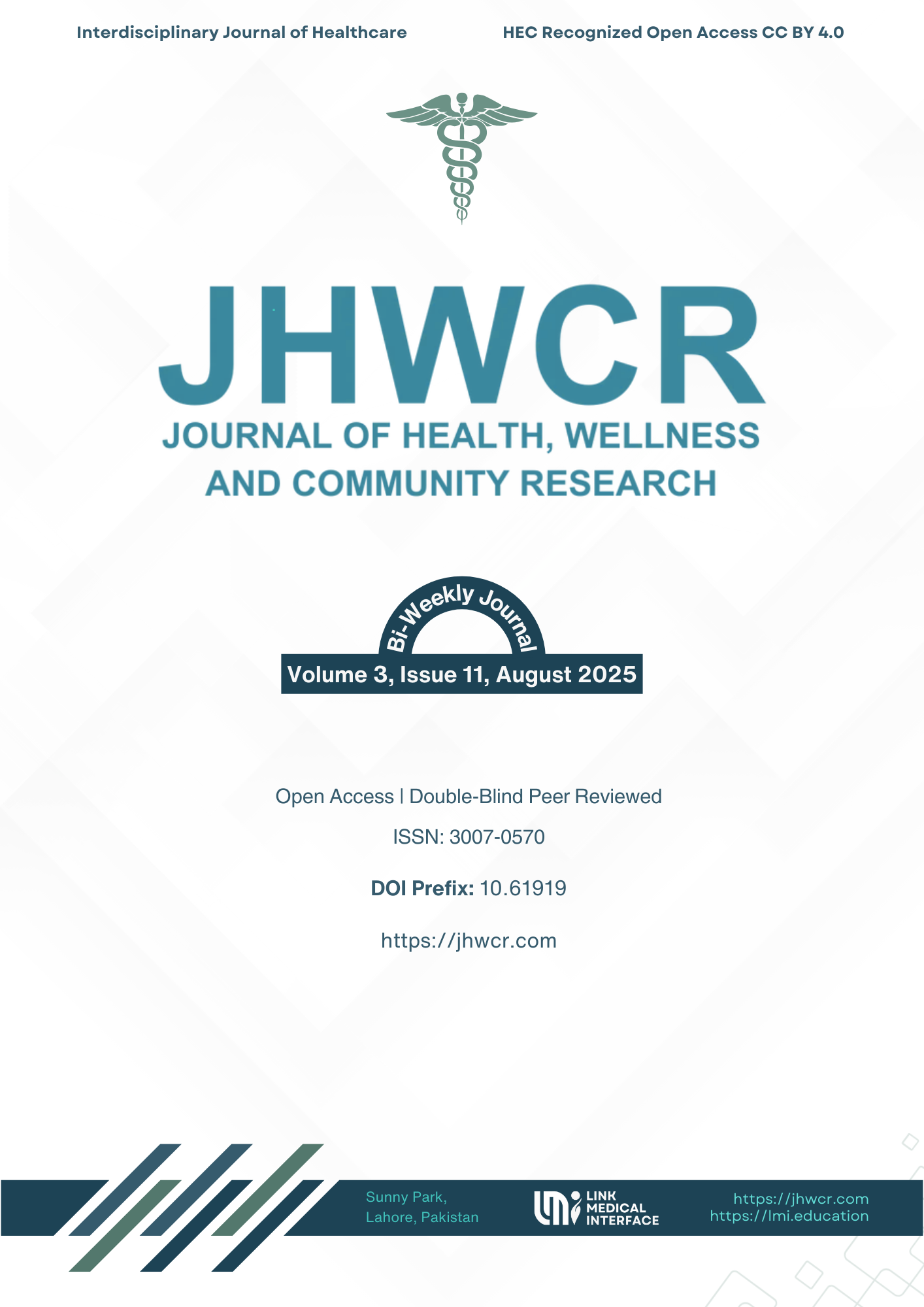Sitting Postures and Piriformis Tightness: A Cross-Sectional Study among Female Physiotherapy Students
DOI:
https://doi.org/10.61919/fhr85q12Keywords:
Piriformis tightness; physiotherapy students; sedentary behavior; low back pain; prevalenceAbstract
Background: Piriformis tightness is an under-recognized musculoskeletal condition that may lead to altered biomechanics, low back pain, and progression toward piriformis syndrome. Prolonged sedentary behavior, particularly extended sitting postures among students, is a key risk factor. Physiotherapy students represent a unique at-risk group, as academic requirements necessitate prolonged sitting that may predispose them to musculoskeletal dysfunction. Objective: To determine the prevalence of piriformis muscle tightness and associated pain characteristics among female physiotherapy students exposed to prolonged sitting. Methods: A descriptive cross-sectional study was conducted among 121 female Doctor of Physical Therapy students at the Women Institute of Rehabilitation Sciences, Abbottabad. Participants were recruited through convenience sampling, screened using inclusion and exclusion criteria, and assessed with a structured questionnaire, the Piriformis Stretch Test, and the FAIR Test. Pain type, severity, aggravating factors, and functional limitations were recorded. Data were analyzed using SPSS v22 with chi-square tests, logistic regression, and prevalence estimates expressed with 95% confidence intervals. Ethical approval and informed consent were obtained. Results: The mean age was 21.0 ± 2.32 years, with 71.9% in the 22–25-year group. Piriformis tightness was present in 67.8% (95% CI 59.1–75.6) by the Piriformis Stretch Test and 28.9% (95% CI 21.1–37.8) by the FAIR Test. Pain aggravated during sitting was reported by 46.3%, low back pain by 62.8%, and gluteal pain by 58.7%. Sitting ≥6 hours daily significantly increased odds of tightness (OR 2.97; 95% CI 1.38–6.42; p = 0.005). Conclusion: Piriformis tightness is highly prevalent among female physiotherapy students, strongly associated with sedentary sitting and musculoskeletal pain. Preventive ergonomic strategies and early interventions are essential.
Downloads
Published
Issue
Section
License
Copyright (c) 2025 Adeeba Tabassum, Mian Waleed Ahmed, Zakir Ullah, Zaineb Siddique, Faiza Nasir, Faria Bibi, Muqaddas Bibi (Author)

This work is licensed under a Creative Commons Attribution 4.0 International License.


